Meet the Boreal Birds of the Northwoods
Updated: Mar. 01, 2024
An astonishing number of species spend their days in the harsh habitat of the Northwoods. Learn to identify these boreal birds.
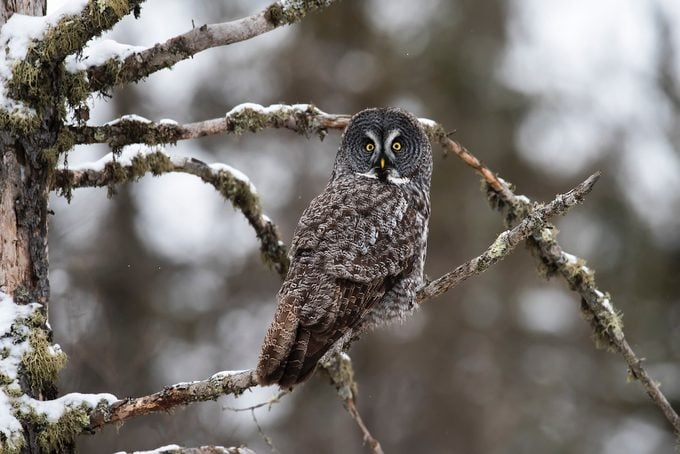
It’s cold, buried in snow for much of the year and infested with mosquitoes and biting flies for the rest. Seems like an inhospitable place, doesn’t it? Not to everyone. The Northwoods, as the boreal forest is also called, is one of the largest ecosystems on earth. It stretches around the northern quarter of the planet, across three continents. In North America, the habitat is mostly in Canada and Alaska, though small portions reach down into the upper Midwest and Northeast. It’s a rough, wild and dark place, but for a staggering number of birds, that huge swath of woods is something else: home.
Check out the 51 best winter bird photos ever.
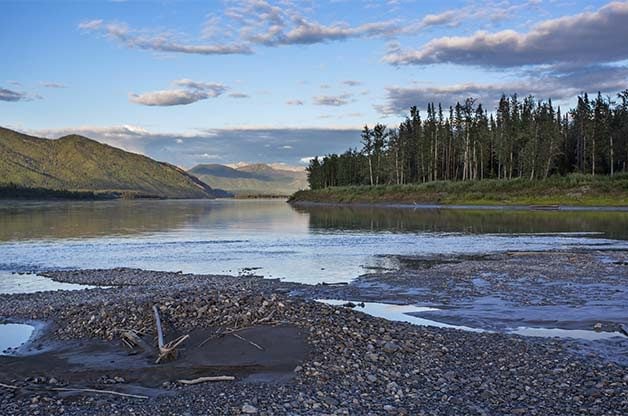
Long Chilly Winter Days
On a frigid January day, when the sun is above the horizon for just a few hours, the boreal forest can seem lifeless. Then, suddenly, it isn’t. Flocks of boreal and black-capped chickadees materialize, their calls bouncing back and forth as they move through the trees. A downy or hairy woodpecker may appear with the group, tapping dead branches as it probes for hibernating insect larvae. Above, a raven passes, croaking. Gliding through the woods like a ghost, a hulking northern goshawk spooks a ruffed or spruce grouse from its resting place on a low branch.
The few resident species use a variety of adaptations to survive the long winter. Chickadees cache food during summer, and use their remarkable memory to recover it when they need it most. The grouse move into the trees to dine on spruce tips, or forage through the brambles looking for frozen berries left over from autumn. Flocks of redpolls, northern finches, take advantage of many pairs of eyes to search for rich foraging areas. Redpolls store seeds in a small pouch in their esophagus, which they draw on during the long, bitterly cold nights.
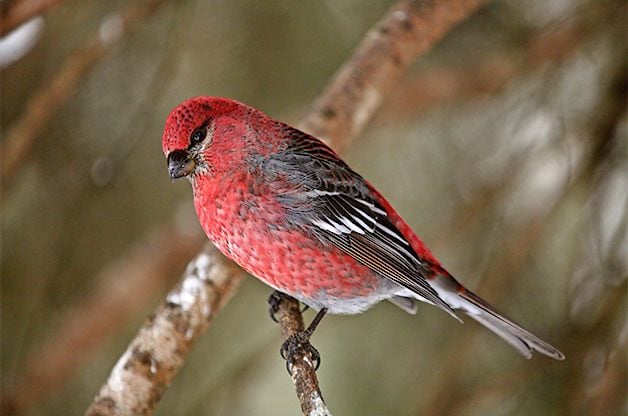
Spring Migration
By March and April, the sun is rising far above the horizon. The first spring migrants arrive as the snow begins to melt. Dark-eyed juncos are almost always the first to come back, but within days, more species arrive: American robins, ruby-crowned kinglets, yellow-rumped warblers and fox and white-crowned sparrows. The silence of winter disappears with the snow by May, when about 150 bird species fill the boreal forest with song.
Summers are short in the north; both the migrant and resident birds make the most of the long days. They establish territories, pair up, build nests, lay eggs and raise their young in less time than do birds who breed farther south. Some species, like the alder flycatcher, spend an average of fewer than 50 days on their breeding grounds. In Alaska, this diminutive gray-green bird arrives in early June and is often gone before the end of July. Other species are also in a rush, and with little time to re-nest if something goes wrong, they are under pressure to succeed.
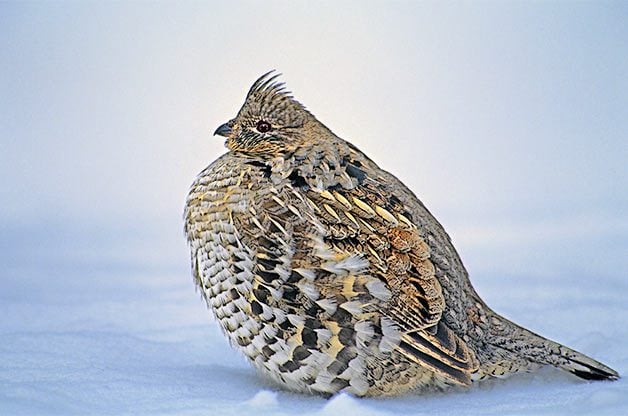
By August, the area is teeming with newly fledged songbirds, and ponds are dotted with broods of ducklings. Mixed species flocks form and move through the forest, searching for food while keeping out a wary eye for predators. Orange-crowned, yellow, blackpoll and yellow-rumped warblers mix with juncos, American tree, white-crowned and Lincoln’s sparrows as they flit through the trees. The breeding season has passed; now the young birds are practicing their songs like kids learning new musical instruments. The resulting notes are mixed up and off-key and never fail to bring a smile to the listener.
Fall Migration
In October, the last of the trumpeter and tundra swans migrate. In white V’s they pass over the mountains and forests on their way to their southern wintering grounds. The other migrants are gone, and the few resident species are left alone as snow settles in once more.
The boreal forest is rugged, wild and often punishing. Unlike other landscapes, such as the mountains or coasts, the boreal forest takes effort to fully appreciate. The birds are easy to love, though. In winter, most of the birds of the Northwoods scatter like a cloud of confetti. You’ll find them from the southern tip of South America to the American Great Plains, from the swamps of the Southeast to the coastal estuaries of the West.
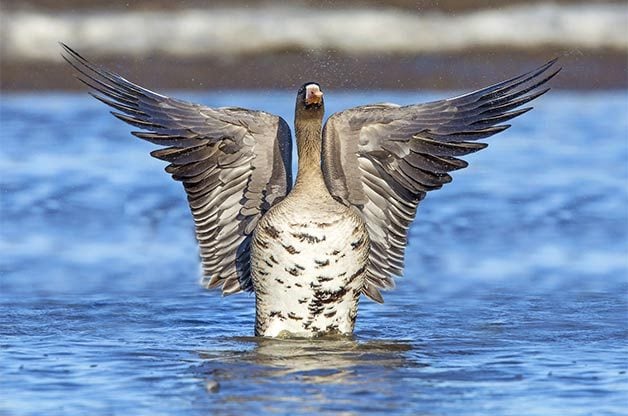
and fall migrations to and from their Arctic breeding grounds.
Spend more than a few minutes watching a bird feeder or glassing ducks at the local pond or birding along a coast, and odds are excellent that a good portion of the birds you see will have hatched or migrated through the boreal forest. It’s a nursery for an estimated 3 billion birds. Without them, not only the north, but the entire continent would be sadly bereft. The boreal forest is essential because the birds that depend on it are a part of all of our lives.
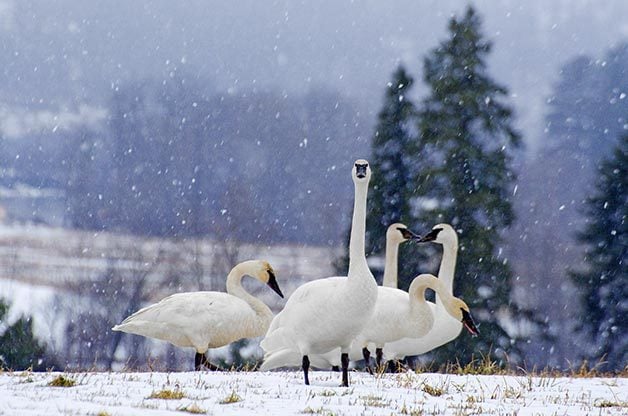
Experience the Boreal Forest
The northern forest is huge and wild, but these areas are accessible to bird-watchers.
Boundary Waters Canoe Area Wilderness, Superior National Forest, Minnesota
Part of the southern reach of the boreal forest touches into northern Minnesota. Huge lakes, winding rivers, meadows and woods are habitat for 163 nesting bird species, including 24 warblers.
Terra Nova National Park, Newfoundland, Canada
This is Canada’s easternmost national park and it combines ancient boreal forest with a stunning coastline, forming a perfect bird habitat. The park is a globally recognized Important Bird Area.
Yukon-Charley Rivers National Preserve, Alaska
Encompassing 3,946 square miles of mountains, rivers, forest and lakes, this area is not easy to get to, but it’s worth the effort. Millions of songbirds, waterfowl and shorebirds breed and migrate through the preserve each year.
